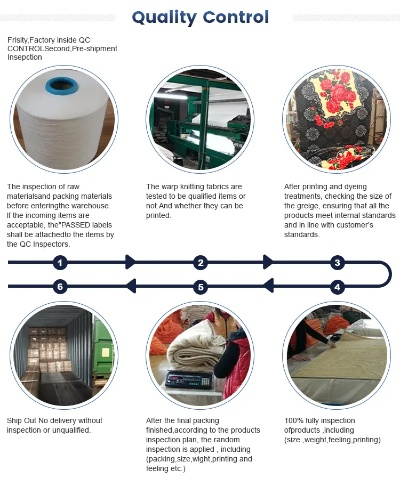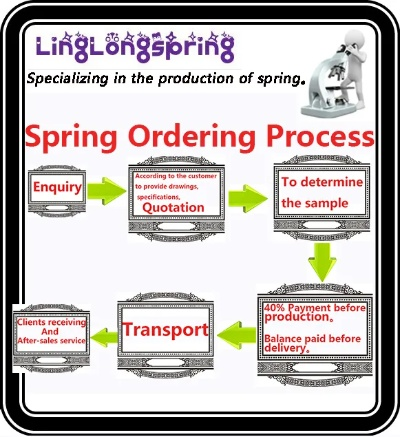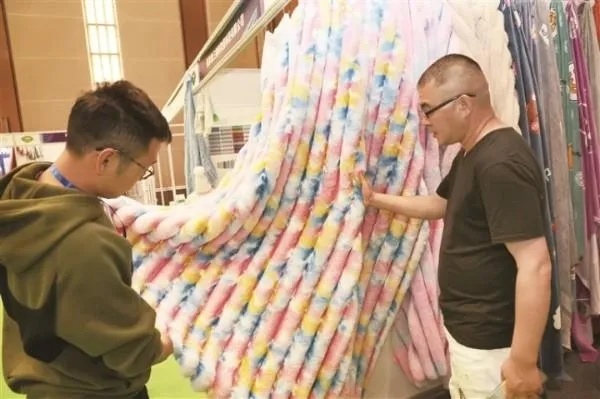An Overview of the Global Textile Industry in 2023
In 2023, the global textile industry has seen significant growth in both production and consumption. The industry is characterized by a high level of diversification across various sectors such as apparel, footwear, and home furnishings. Despite ongoing challenges related to labor costs, environmental regulations, and technological disruptions, the industry remains resilient and continues to expand globally. The adoption of sustainable practices, particularly in the production of eco-friendly textiles, is becoming increasingly important for companies looking to maintain profitability and market share. As demand continues to rise in emerging markets, it presents new opportunities for innovation and expansion within the global textile industry.
Introduction: The textile industry is one of the most significant sectors globally, contributing significantly to employment and economic growth. In 2023, the industry faces numerous challenges due to factors such as supply chain disruptions, increased competition, and shifts in consumer preferences towards sustainable materials. However, there are also signs of resilience and innovation within this sector, making it essential for stakeholders to understand its current state and future prospects. This article provides a comprehensive analysis of the global textile industry's performance in 2023, highlighting key indicators and case studies to illustrate the dynamics of the industry.

Global Textile Market Analysis: According to data from International Data Corporation (IDC), the global textile market is projected to grow at a compound annual growth rate (CAGR) of 4.5% from 2023 to 2029. This growth is driven by increased demand from emerging markets, particularly in Asia Pacific, where textile consumption is expected to rise by 6% per annum. In contrast, developed economies such as North America and Europe are experiencing a slowdown due to shifting consumer behavior towards more sustainable options and higher prices for raw materials.
In terms of regional performance, Asia Pacific remains the largest market, accounting for over 40% of the global textile output. The region has been witnessing rapid growth in manufacturing capabilities and technological advancements in textile production, including automation and e-commerce integration. South Korea and Japan have led this transformation with strong investments in new machinery and advanced design concepts. Meanwhile, China continues to be a dominant player in the global textile industry, producing over two-thirds of the world's fabrics and garments.
However, the COVID-19 pandemic has impacted the textile industry across the globe, causing supply chain disruptions, delays, and price volatility. Many factories were forced to shut down due to travel restrictions, resulting in a shortage of raw materials and finished products, leading to higher prices and reduced availability. Additionally, the shift to remote work has further complicated the supply chain, with increased reliance on digital platforms for order placement and logistics management.
Sustainability and Environmental Impact: The textile industry has made significant strides in recent years towards sustainability and environmental responsibility. Major players have implemented various initiatives, ranging from reducing water use in production to using recycled or organic materials in their products. According to a report by the Ellen MacArthur Foundation, companies that prioritize sustainability have seen a 15% increase in customer loyalty compared to traditional brands.
One notable example is Patagonia, a U.S.-based outdoor gear company known for its commitment to sustainable practices in clothing production. Patagonia sources its cotton from farms that adhere to Fair Trade principles and has invested heavily in renewable energy sources to reduce its carbon footprint. As a result, the company has achieved a net zero carbon footprint by 2030 and has become a leader in the sustainability movement among apparel retailers.
Competition and Innovation: The textile industry is highly competitive, with major players such as Zara, H&M, and Uniqlo dominating global markets with their fast-fashion offerings. However, these companies are constantly innovating to stay relevant in a changing market landscape. For instance, Zara has introduced smart labels that track inventory levels and suggest products based on customer browsing history, enhancing customer experience and reducing waste.
Moreover, technology is transforming the industry, with automation and artificial intelligence (AI) playing a crucial role in improving efficiency and reducing costs. Robotics is being used in the textile industry, allowing for increased speed and precision in cutting and weaving processes. AI-powered chatbots and predictive analytics are also becoming popular, enabling manufacturers to optimize their inventory management and improve supply chain resilience.
Conclusion: The textile industry remains a dynamic and complex sector, facing both domestic and international challenges. Despite the pandemic's impact, there is evidence of industry resilience and innovation, driven by consumers' growing preference for sustainable products and technological advancements. As the industry continues to evolve, it will be crucial for stakeholders to stay informed and adapt to the ever-changing demands and opportunities presented by the global market.
Good day, fellow纺织爱好者们!今天我们来聊聊今年纺织品市场的现状,让我们一起来探讨一下这个话题。
纺织品市场概述
纺织品是日常生活中不可或缺的商品之一,种类繁多,包括但不限于服装、家居装饰品、手工艺品等,近年来,随着人们生活水平的提高和消费观念的转变,纺织品市场呈现出繁荣发展的态势。
今年纺织品市场现状
市场需求旺盛
随着人们对于高品质、个性化、环保等需求的增加,纺织品市场呈现出强劲的需求势头,消费者对于纺织品的品质、款式、功能等方面要求越来越高,推动了纺织品市场的快速发展。

竞争激烈
纺织品市场竞争激烈,各大品牌、厂家都在努力提升产品质量和服务水平,以吸引更多的消费者,随着互联网的普及和电子商务的快速发展,纺织品市场也出现了新的竞争格局。
环保趋势明显
随着环保意识的提高,越来越多的消费者开始关注纺织品的环保性能,许多纺织品生产厂家开始注重环保生产,采用环保材料和技术,以符合消费者的需求和期望。
案例说明
以某知名纺织品品牌为例,近年来其在纺织品市场上的表现:
产品创新升级
该品牌近年来不断进行产品创新升级,推出了一系列具有时尚、个性、环保等特性的纺织品产品,这些产品不仅款式新颖,而且功能多样,深受消费者喜爱。
营销策略调整
为了适应市场需求和竞争环境的变化,该品牌不断调整营销策略,他们加强了线上线下的宣传推广,提高了品牌知名度和美誉度,他们还注重与消费者的互动和沟通,提供优质的售后服务,以提升消费者的满意度和忠诚度。
展望未来,纺织品市场仍然具有广阔的发展空间,随着人们生活水平的提高和消费观念的转变,纺织品市场将继续保持繁荣发展的态势,随着环保意识的提高和消费者需求的多样化,纺织品市场也将迎来新的发展机遇。
补充说明(表格)
以下是关于今年纺织品市场的补充说明表格:
| 项目 | 描述 | 数据来源 |
|---|---|---|
| 市场总体情况 | 纺织品市场繁荣发展 | 根据相关数据统计 |
| 市场需求情况 | 旺盛 | 根据消费者调查数据 |
| 竞争情况 | 激烈 | 根据市场调研数据 |
| 环保趋势 | 明显 | 根据环保政策和社会舆论数据 |
| 品牌案例分析 | 该知名纺织品品牌 | 根据相关报道和数据统计 |
| 产品创新升级情况 | 产品款式新颖、功能多样 | 根据该品牌近年来的产品更新数据 |
| 营销策略调整情况 | 加强线上线下的宣传推广、调整营销策略 | 根据市场调研和品牌营销数据 |
| 未来展望 | 继续保持繁荣发展态势、迎来新的发展机遇 | 根据相关预测和数据分析 |
就是关于今年纺织品市场的现状分析,希望对您有所帮助,在未来的发展中,我们期待纺织品市场能够继续保持繁荣发展的态势,为消费者提供更多优质的产品和服务。
Articles related to the knowledge points of this article:
The Journey of Duoqi Home Textiles



